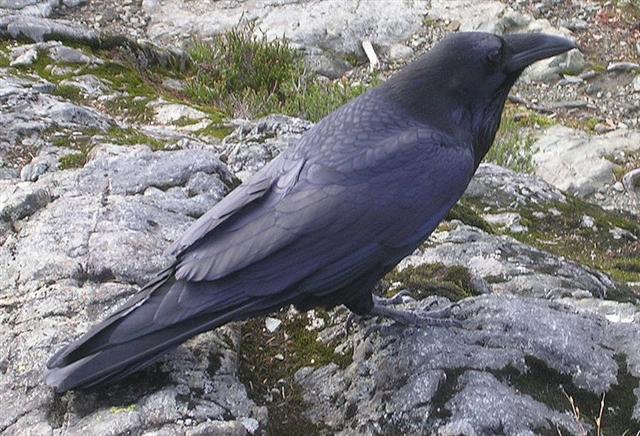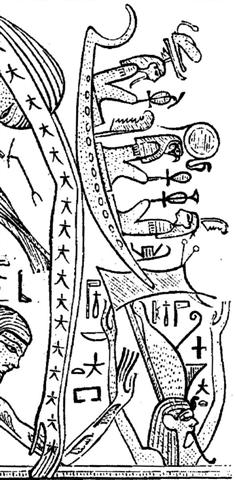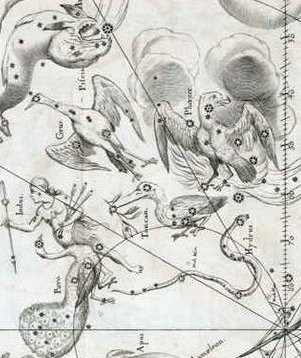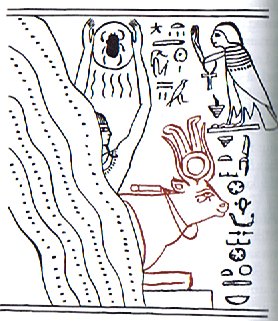In rongorongo times the Phoenix constellation was beginning 8 days before 0h, with ι, and like the Stag it surely was a sign of Fire (Sun) being reborn. The Horse had got foothold on Field, still half submerged under the waves of water, and Swallow had returned all the insects (manu rere) engulfed during the previous summer. New sacred fires - in magical harmony with the new Sun - could now be alighted (like when the spring birds alighted in the trees). Time could once again begin to be counted at 45º from day 320 (21h):
320 + 33 (once on Hawaii the ideal number of days from the return of the Pleiades in the evening to the winter solsitce) = 353, a day before 354 = 12 * 29½ when a new Sun king was needed, after the old one had been reduced to ashed (te kihikihi):
Although Metoro at Kerb (τ Pegasi) said te vaha erua I early found this glyph to be a case of the glyph type hoea:
Hoea glyphs possibly should be at the end - at the ashes (te kihikihi) - of some cycle. Although Ca13-12 corresponds to RA day 354 (= 12 * 29½), the preceding hakaariki ('making a king') glyph is number 354 in the text. Instead of the pointed antlers of a Stag the creators of the rongorongo system had to choose something else, something which was present on the island and which could draw the thoughts in the right direction. The point of a tattoing instrument was an obvious alternative to the antlers.
A stag has a bunch of tines (in my picture on the preceding page 2 * 6 = 12 in number but in the Babylonian zodiac depicted as a triplet of flames plus a tail like Y at the back side). Maybe south of the equator there were 2 sharp points in the year, one for creating darkness and the other for creating light:
The season of the fire bird Phoenix contained March 21 (when black Raven could be observed at 12h in the night and close to the Moon):
Manu tara (the sea swallow) has a pointed beak while Raven has a more ordinary kind of beak:
The Phoenix bird should also have a pointed beak, in order to punctuate the Black Cloth of winter - like how the pointed prow of the Sun ship pierced the night 'cloth' of Nut:
But Hevelius has instead drawn Phoenix with a pair of wings like pointed beaks and possibly ι is at the joint of the front (right) wing:
Although the Phoenix bird is oriented backwards in time its head has turned around looking to the future. Perhaps Hevelius knew how in ancient Egypt the Taurus constellation broke through the rain clouds, because a bull has a pair of (t)horns (tara):
Hathor was a cow and her name means the house (h-th, bet) of Horus (Spring Sun), which probably means Sun broke through the winter clouds when he was in Taurus. Certainly the Egyptian artist must have inserted one 'rain drop' for each night of winter:
121 + 350 = 471 (= 150% * 314 = 16 * 29½ - 1). | ||||||||||||||||||||||||||||||||||||||||||||||||||||||||||||||||||||||||||||||||||||||||||||||||||||||||||||||||||||||||||||||||||||||||||||||||||||||||||||||||||||||||||||||||||||||||||||||||||||||||||||||||



















